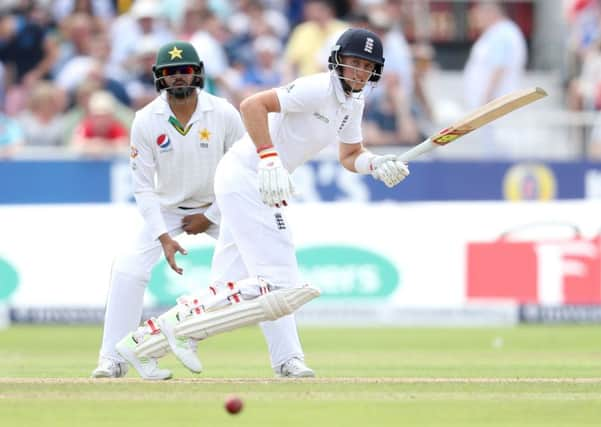Chris Waters: Now is not the time to put a dampener on batting fireworks


The MCC World Cricket Committee this month recommended that the thickness and depth of bats be restricted amid concerns that the balance between bat and ball has tilted too far in favour of batsmen.
Mike Brearley, the former England captain, who chairs the committee, expressed a prevailing concern that mis-hits nowadays are flying for six.
Advertisement
Hide AdAdvertisement
Hide Ad“The time has come to restrict the size of bat edges and the overall width (depth) of bats,” he said.
“It was pointed out to us (the committee) that, in 1905, the width of bats was 16mm and that, by 1980, it had increased to 18mm.
“It is now an average, in professional cricket, of 35-40mm and sometimes up to 60mm.
“That shows how fast the change has been.”
Brearley’s committee proposed that “further consultations will be held with bat manufacturers and scientists to finalise the exact measurements and to investigate the viability and need for a weight limit”.
Advertisement
Hide AdAdvertisement
Hide AdDepending on progress, an amended law could be ratified by MCC’s main committee as part of a new Code of Laws scheduled to be introduced in October next year.
My own view is that although we clearly do need a limit on the thickness and depth of bats, what we do not want is to shift the balance too far back the other way at a time when spectators have come to expect batting fireworks – and plenty of them.
Yes, I have sympathy for bowlers in this era of crash-bang-wallop, and cricket is clearly not just about hitting fours and sixes.
However, I also believe that the best bowlers still find a way, and it is hardly uncommon for spinners, for example, to do well in T20 – just look at the success rate of Yorkshire’s very own Adil Rashid and Azeem Rafiq in recent years.
Advertisement
Hide AdAdvertisement
Hide AdIf bowlers are good enough, they will prosper regardless of the depth and thickness of bats, which in themselves are no guarantee that players will strike the ball out of the ground.
When I go to watch a match, I want to see entertaining cricket like anyone else.
I want to see the likes of Travis Head smashing 175 in a one-day game, as he did for Yorkshire at Leicester last Sunday, the second-highest innings for the club in a one-day match.
I want to see the likes of Jack Leaning hammering 131 not out, which he did in the same fixture.
Advertisement
Hide AdAdvertisement
Hide AdWhy, I would love to have seen Ben Duckett score 220 not out and Daniel Bell-Drummond 171 not out for the England Lions in a 50-over game against Sri Lanka A last week, the pair adding 367 – five short of the all-time one-day record stand.
I repeat, the best bowlers prosper and still find a way, and Test cricket is arguably more entertaining now than it has ever been.
Ricky Ponting, the former Australia captain and a member of Gatting’s committee, believes that we should have separate rules for bat sizes in Tests and one-day matches.
It is a valid suggestion, and perhaps that is an effective compromise.
Advertisement
Hide AdAdvertisement
Hide AdHowever, we must remember that the game moves on and that nothing stays the same.
Some of the strokes played nowadays are frankly incredible, and it is perhaps more important to sort out issues such as the quality of pitches than it is to clamp down on the size of cricket bats.